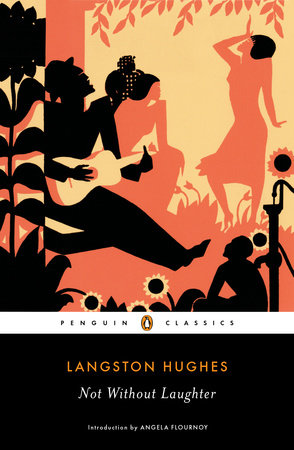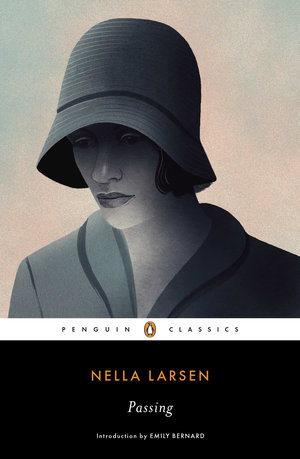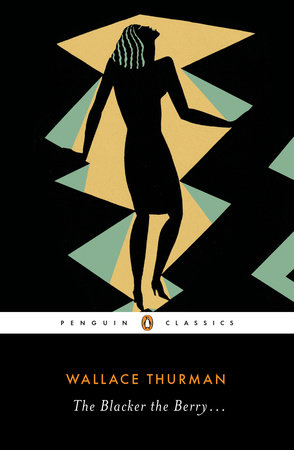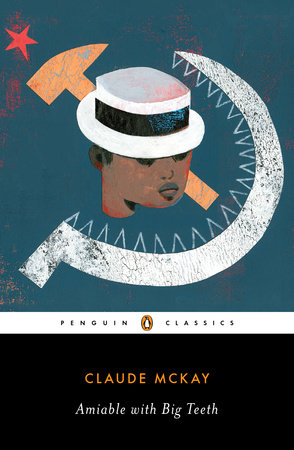
One hundred years ago, the New York neighbourhood of Harlem was in the first stages of what was to be an explosion of African-American culture, writing, and social reform. Known as the Harlem Renaissance, this movement was to prove a crucial moment in black history in America.
At the start of the 20th century, Harlem had been growing in prominence as a black neighbourhood, due to a number of reasons including the Great Migration of African- Americans from the South, and returning black veterans from World War I. From this convergence emerged a group of people, determined to put African-American culture on the world stage where it belonged. With this new sense of place in the American cultural corpus, the Harlem Renaissance was integral to changing perceptions of African-Americans. Where before they were associated with only negative characteristics such as being rural, poor, and uneducated, there was now an image of African-Americans as being cosmopolitan, talented, intellectually impressive, and sophisticated.

While this rebirth of African-American arts could certainly be found in other urban spaces the Northeast and Midwest, but Harlem was the clear centre, and it was from there that many francophone writers such as Aimé Césaire and Léopold Sédar Senghor from the Caribbean and Africa were also influenced. As a movement which was part of wider cultural change it can be hard to pin down the years it was active, but the common consensus places it between 1918 and 1937, with some early seeds being sowed in 1917. However, its impact lived on long afterwards. Its marking of a renewed sense of self-determination would be built upon in the fight for Civil Rights in the 1950s and 1960s. During the Harlem Renaissance, African-Americans were determined to express themselves through art, politics and music, and have these expressions recognised as important cultural works. But perhaps more than any other form, the movement saw African-American writing come to the fore, and civil rights activist James Weldon Jones, described the period as “the flowering of Negro literature.”
With this in mind, this centenary is perhaps best marked by a look at some of the authors and writing to emerge from the movement. In fact, to celebrate the Harlem Renaissance, Penguin has brought out a set of new editions of some of the most powerful voices of the movement. The books cover a wide range of topics and genres and are a fantastic place to begin to explore the literature of the era.

You could begin with the writings of one of the most prominent political forces in the fight for civil rights in the early 20th century, W.E.B. Du Bois. In 1909 Du Bois co- founded the NAACP, and afterwards he went on to be a driving force in the Harlem Renaissance as he saw the profound political implications of art. Indeed he went so far as to say ‘I do not care a damn for any art that is not used for propaganda.”
However, before all of these things, Du Bois produced one of the seminal works of black politics and philosophy. Written in 1903, The Souls of Black Folk is a collection of 14 essays on the history, social experience and progress of African-Americans. In this Du Bois hoped to convey the genius and humanity of the eponymous ‘black folk.’ of America. His elegant prose delivers some of the most powerful statements and questions of the 20th century. And it was this book that laid the groundwork for the cultural elevation of African Americans in the Harlem Renaissance.

Moving from the groundwork of the movement to the very heart of it, we arrive at Langston Hughes. Along with being perhaps the best-remembered leader of the Harlem Renaissance, Hughes was also one of the first innovators in the genre of jazz poetry, and is often referred to as the poet laureate of Harlem. While most closely associated with poetry, Not Without Laughter was Hughes’ debut novel, and demonstrates his immense talent in fiction writing. The story is a semi-autobiographical tale of a young man coming of age, also coming to terms with both the harshness and beauty of life for black people in his small Kansas town. Hughes addresses some of the stark effects of class, race, and religious lines between people; the depiction of the discrimination at the time is truly heartbreaking. But it is also a novel of love and hope, as the young boy, Sandy, aspires to raise himself to the levels of the figures before him, like Du Bois, and Booker T Washington.

The Harlem Renaissance was a time when minority authors and artists were brought to the fore so it is entirely fitting that women played a vital role in this movement. Some of the most notable works came from female authors, and Nella Larsen was no exception. Although she produced only two novels, she was widely recognised for her talent at the time. Larsen lent a particular perspective because she was of mixed heritage with a largely Danish background. She lived in Denmark as a child and had little to no connection with the black culture of African-Americans migrating from the South to the northern cities. Because of this, Larsen struggled to find a place to belong and in this struggle emerged as one of the most powerful novelists of the Harlem Renaissance. Passing looks at the lives of two black women, who ‘pass’ for white. The women, Irene and Clare, had grown up together as friends, but their lives have diverged. Irene is middle-class and married to a black doctor, while Clare is attempting to hide her background to her white husband. Both women are fascinated by the other’s life, but Clare’s deception brings both herself, and her friend’s life into danger. Larsen deftly explores the liminal space within race, as well as sexuality and gender, and shows the grey areas in the conflicts between black and white.

The next entry in Penguin’s editions, The Blacker the Berry..., also delves into the ambiguities of race and colour, but from a very different perspective. Its author Wallace Thurman had been a voracious reader since childhood, and went on to become an editor, writer and publisher. In these roles he displayed his incredible critical skills. He took issue with some of Du Bois' politics, as he saw the efforts to show the respectability of African-Americans as only good for white appeasement. Instead, he wished to show the realities of life for black people, even if this reflected badly on them. It is not surprising that this novel was a searing look at colourism within black communities, and how the preference for lighter skin tones affected women in particular. Following the story of a young woman, Emma Lou, with strikingly dark skin, who sets out to find a community in which she feels accepted, the journey takes her from her rural home, to university, to New York, but she struggles to find a place where her colour doesn’t limit her. The work was truly groundbreaking in reflecting the complexity of black identity. This kind of serious intellectual discussion is undoubtedly an important aspect to highlight and explore, but it's also important, if not equally so, to see this as a movement of celebration. The Harlem Renaissance was a time for African-Americans to take joy in their own culture. Jazz became a widespread phenomenon, outside black communities as well as within them, and while dancing in Paris, Josephine Baker, another Harlem Renaissance alumni became an icon of beauty and fashion. It was a time where African-Americans were embracing and celebrating their black identity. This sentiment was wonderfully summed up by Zora Neale Hurston
"Sometimes I feel discriminated against, but it does not make me angry. It merely astonishes me. How can anyone deny themselves the pleasure of my company? It's beyond me."

This tongue-in-cheek tone is characteristic of the time. The ownership of their own identity allowed authors to play with humour and satire. Previously, the comedy surrounding African-Americans was only the prejudiced lampooning of outsiders, particularly in the form of minstrels and caricatures, but as the Harlem Renaissance grew, authors were able to take control of their own image, to the point where they could satirize themselves and use humour on their own terms. This is never more evident than in Langston Hughes who we have already mentioned above. Hughes was undeniably a powerful and important writer and poet. But among his lofty accolades, Hughes was also a whip-sharp humorist. There are elements of this throughout his writing, but it is best seen in his series of articles based around the character of “Simples” or Jesse B. Semple. Through the eyes of every-man Simples, Hughes treats us to a view of Harlem, in all of its ironies and ridiculousness.

Hughes was far from the only person to look to humour in the Harlem Renaissance. It's fitting that the last of the Penguin books (bar one but we’ll get to that later) is a combination of both searing humour, and political and social criticism. George S. Schuyler’s Black No More is an incisive look at the way racism props up social institutions, and the superficiality of racial prejudices. The story is told as a satire, filled with biting wit and humour and is centred around a scientific discovery which allows black people to turn white. This Black-No-More treatment threatens both white supremacists and African-American cultural leaders. Schuyler attempts to highlight the cultural obsession with race, and manages to take swipes at the KKK and NAACP at the same time. He even caricatures many notable figures of the day including Du Bois, and James Weldon Johnson. Schuyler’s use of science fiction elements also places him at the very start of Afro-futurism, but the book is primarily a satire. His approach is whip sharp in its depiction of the ridiculousness of racism, as when white supremacists turn to genealogy to place themselves above those who have epidermically disguised themselves. But as we might expect, these white supremacists are in for a nasty shock when the results of everyone’s genealogical surveys come back. Black No More embodies many of the best elements of the Harlem Renaissance - cutting-edge social critique, razor sharp humour, and incredible literary inventiveness.
There are, of course, many other books that are emblematic of the era. If you are looking to explore further, a compendium is often an excellent way to discover and explore authors. The Library of America has compiled a set of two books, each with five novels, that highlight in the first instance Harlem Renaissance books from the 1920s, and in the second, those from the 1930s. There is some overlap with the above books, but there is also a range of other important novels, including Nella Larsen’s first novel Quicksand, and Arna Bontemps' fictional exploration of a potential black revolt against oppression in Black Thunder.
Beyond these staples, there has been in recent years several reprints and rediscoveries that have expanded our canon of Harlem Renaissance novels. Indeed there’s almost never been a better time to explore the era’s literature.

The first of these is merely a revival but an important one nonetheless. Rudolph Fisher’s The Conjure-Man Dies has been in print over the years, indeed it appears in the collection recommended above. However, it has failed to garner the attention it deserves, as arguably the first detective story written by an African-American. Now with Harper Collins’ Detective Club series, a whole slew of forgotten mysteries have found the spotlight again, and The Conjure Man Dies is among them.The story is a classic locked door mystery, but with a Harlem twist. The occultist and conjure-man N’Gana Frimbo is discovered dead in his own consultation rooms. Perry Dart, one of the only black detectives in Harlem must investigate what happened to this elusive figure. He is helped by Dr Archer, a doctor living across the street, and he is both helped and hindered by the assistance of Bubber Brown and Jinx Jenkins, local layabouts, keen to clear their names and prove their worth. It’s a deliciously plotted mystery, tinged throughout with humour, a must-read for anyone interested in the era or in the genre of crime. To find out more about Fisher, and his detective novel read: The Conjure-Man Dies: Rudolph Fisher and the First Black Detective Novel

The second book to come to the fore in recent years, was the monumental finding of a completed manuscript by Claude McKay. McKay was one of the major figures of the Harlem Renaissance. His novel Home to Harlem, written in 1928 was emblematic of the movement and of McKay’s writing. It provides a striking look at Harlem nightlife in all its glory and grit. Like Wallace Thurman, McKay wished to portray life for African-Americans with all its struggles and flaws.
In 1941, he wrote his final novel, Amiable with Big Teeth, but the manuscript was not found until 2017, in what was one of the most significant literary events in the past years. This novel centres on a group of Harlem intellectuals who are organising support for those who wish to fight to free Ethiopia from fascist control. This historical event has often been forgotten but McKay explores it through this rich portrayal of this complex political era.

Amiable with Big Teeth is written as a satire, but also gets to the heart and hopes of African-Americans at the time. Its rediscovery marks a welcome entry to the outstanding legacy of one of the era’s most important writers. This recent publication was also rereleased so as to be part of Penguin’s Harlem Renaissance editions.
Our final book comes from a name that looms large, not just within the Harlem Renaissance but in American literature in general. In 1937 Zora Neale Hurston published one of the seminal works of African-American literature and women’s literature, Their Eyes Were Watching God. While she is best remembered for her work in fiction, however, Hurston contributed enormously as a folklorist and anthropologist, and it was in this capacity that Hurston wrote Barracoon.

Written in 1931, a few years before publishing Their Eyes Were Watching Gods, Barracoon is only now being published for the first time. Barracoon is the result of Hurston’s three month visit to Cudjo Lewis, the last person left alive to tell of their experience in the Atlantic slave trade. Hurston interviewed Lewis over these months to get his account of being kidnapped from Benin, being held on a barracoon, an enclosure for slaves, as he was transported across the Atlantic to become a slave in the American south. Lewis was nearly 90 when Hurston met him. He recounted how he came across in Clothilde, a slave ship, and had outlived all others who had endured this nightmare. His memories form a horrifying picture of the slave trade, a part of history that continues to haunt until today. Barracoon is an important work, in so many different ways, and it will finally see publication in May 2018.
It is hard to understate the cultural impact of the Harlem Renaissance. It was a time of profound social, cultural, and artistic change and as we have seen, it produced some incredible examples of fiction, philosophy, and memoir. Aberjhani, an African-American poet and co-author of the Encyclopedia of the Harlem Renaissance summed up the triumph of the era, he said:
"The best of humanity’s recorded history is a balance between horrors endured and victories achieved, and so it was during the Harlem Renaissance."
It is truly fascinating to explore the writing of this movement, not only because it is of incredible historical importance, but because the writing itself is so full of life and lyricism, humour and heartbreak. A hundred years later and these writers are still reverberating around the world.
This article was originally written for Bookwitty.com and published February 27th, 2018.
























Comments